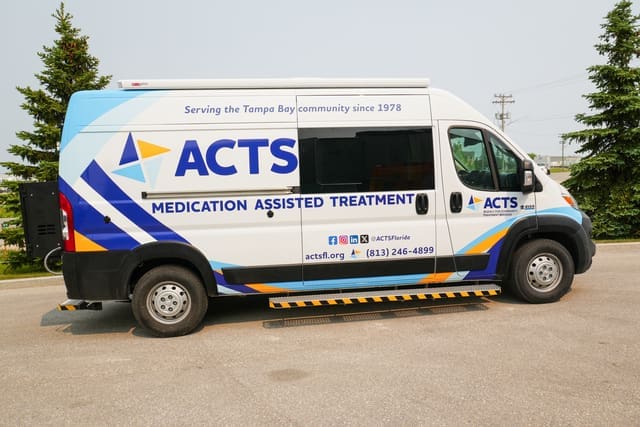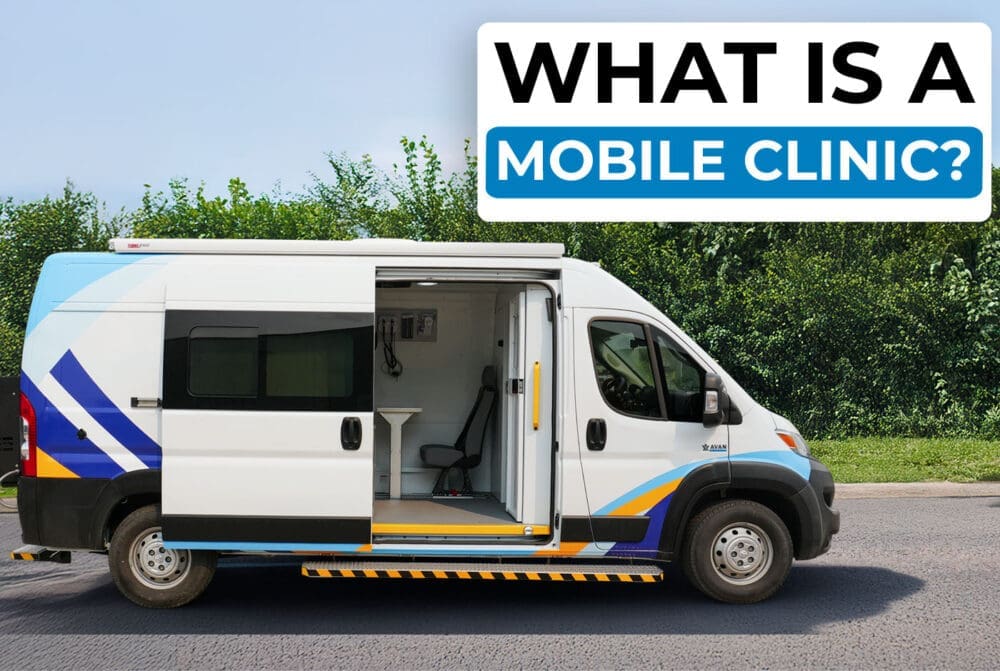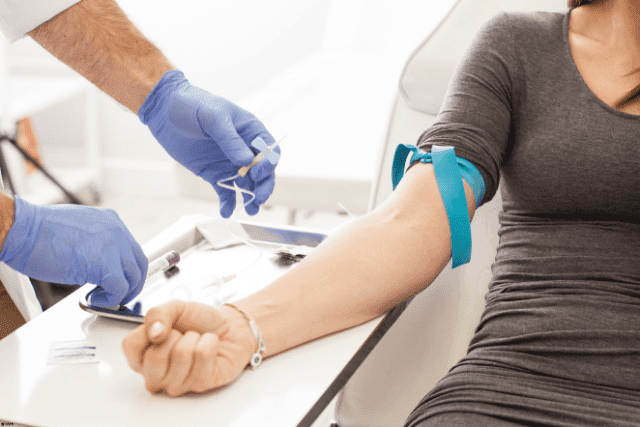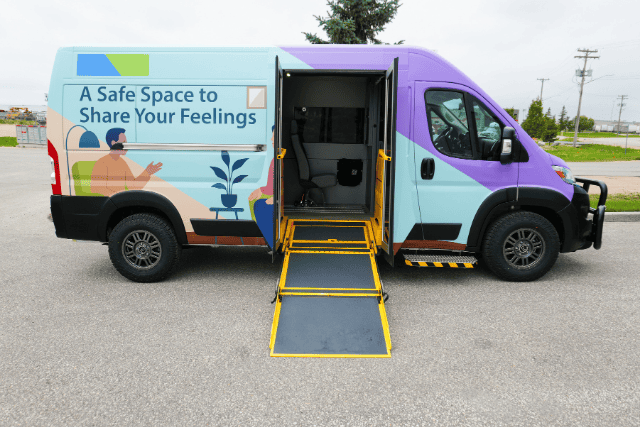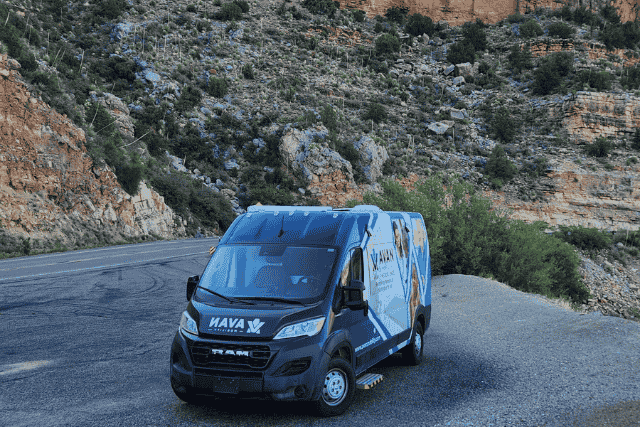Over 1 million people in the U.S. have died from drug overdoses since the late 1990s, and the crisis is still growing. Even with opioid settlement funds becoming available, many communities are stuck wondering how to use them in ways that create real change.
If you’re part of a health department, tribal organization, or nonprofit on the front lines, you might be feeling overwhelmed. You’ve got funding available, or it’s coming soon, but the gaps are still wide. Access is limited. Overdoses are rising. And there’s a real fear of wasting time, money, and trust. I see it every day.
I’m Russ Evans with AVAN Mobility. For over 10 years, I’ve helped organizations like yours bring healthcare directly to people. I’ve got a background in emergency response and have a passion for keeping people out of the ER who don’t need to be there.
Our mobile units break down barriers to care and help folks get treatment before it’s too late. That’s how lives get saved. While we do build vehicles, my goal here is to help you think through your options.
In this article, you’ll learn:
- What opioid settlement funds can be used for
- Ways mobile solutions are making a difference
- How to apply for opioid settlement funds
What are opioid settlement funds?
Opioid settlement funds are payments being made by drug companies that were sued for their role in the opioid crisis. These companies, manufacturers, distributors, and big-name pharmacies were found to have pushed opioids into communities while downplaying how addictive they really were. Now, they’re being held responsible.
Over $50 billion is being paid out over the next 15 to 20 years to help states, counties, cities, and tribal communities recover.
I see these funds as a long-overdue opportunity to repair what’s been broken. But here’s the thing: each state decides how to manage its share. That means opioid settlement funds by state can look very different. Some have public dashboards and structured planning, while others are still working out the details.
Here’s the big picture:
- Where it came from: Legal settlements with drug companies involved in the opioid crisis
- How much is available: Over $50 billion across the U.S.
- Who gets it: State and local governments, tribal organizations, and community programs
- Why it matters: It’s a once-in-a-generation chance to rebuild access to care and restore trust
Next up, let’s look at what these funds can be used for.
What can opioid settlement funds be used for?
If you’ve ever asked yourself, what can opioid settlement funds be used for? you’re exactly where many local health leaders start. Thanks to Exhibit E in the national settlement agreements, these funds must directly address the opioid crisis, and that gives them real purpose.
I’ve worked with communities across the U.S., and I see Exhibit E as a roadmap. It lays out approved strategies that include prevention, treatment, recovery, harm reduction, and more.
Here’s a simplified snapshot:
- Treatment access: Supports medication-assisted treatment, counseling, and even mobile clinics
- Prevention efforts: Health education, school programs, safer prescribing practices
- Harm reduction: Naloxone distribution, syringe services, overdose prevention training
- Recovery support: Housing, job training, transportation for treatment
- First responder tools: Training, equipment, warm touch transition services
- Innovation support: Telehealth, mobile units, data collection, workforce development
You can explore the complete list of approved uses through the settlement’s official Exhibit E PDF. It’s clear these aren’t vague ideas. They’re proven methods to reduce harm and save lives.
I believe mobile and outreach solutions can thrive within these guidelines, which I’ll discuss next.
How do mobile medical units fill the gaps in care
Here’s the hard truth: Most people struggling with opioid use disorder (OUD) don’t get the help they need. And it’s not because they don’t want it. It’s because getting to that help can feel impossible.
- No transportation
- No nearby clinics
- Long waitlists
- Too much stigma to walk through the front doors
A real story from NPR shares how tribal leaders in Montana watched members drive hours for treatment as overdoses surged. That’s not just a setback—that’s a barrier between life and death.
That’s why I believe mobile medical units are one of the smartest ways to put opioid settlement funds to work. Organizations like yours can use them to bring care right to where people are, without the red tape, the stigma, or the long wait.
Let’s walk through a few of the most effective vehicle types that can make a real impact using your opioid settlement funds.
1. The Mobile Counseling Unit
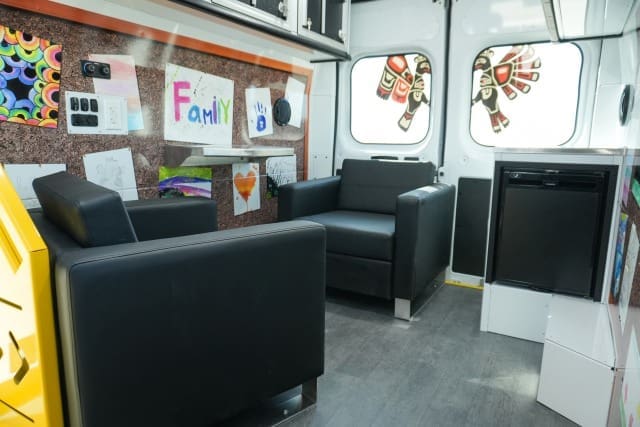
Mental health and addiction go hand in hand. You can’t treat one without treating the other. A Mobile counseling unit gives your community a private, welcoming space for therapy, peer support, and behavioral assessments, right where people are.
These units are set up for one-on-one sessions, group therapy, and telehealth follow-ups. Picture a safe, trauma-informed clinic on wheels that removes common barriers.
Why does it work?
- Private space: Clients feel respected and safe
- Flexible hours: Evening and weekend slots reach more people
- Local presence: Jobs, shelters, encampments, rural towns, no travel needed
You can use your opioid settlement funds to buy this unit, staff it with trained counselors, and deliver support in a way that removes shame and time delays. These units aren’t just mobile. They’re intentional. They bring care, and dignity, right to those who need it.
2. The Mobile Clinic
A mobile clinic is basically a doctor’s office on wheels. If your community is struggling with high overdose rates and limited access to treatment, this unit can be a game-changer. You can fully outfit it for Medication-Assisted Treatment (MAT), meaning your team can prescribe, dispense, and monitor medications like buprenorphine or methadone right where people live.
I’ve seen these clinics used in rural areas, urban neighborhoods, and even parked outside shelters or community centers. The beauty of this setup is that it meets people where they are and reduces the number of steps it takes to get help. No waiting weeks for a referral. No bouncing between facilities. Just care that shows up on time.
What can your mobile clinic offer?
- MAT services: Prescriptions, dispensing, monitoring, and follow-up
- Basic medical care: Physicals, wound care, lab tests, and more
- Health screenings: Hep C, HIV, pregnancy, mental health assessments
- Connection to support: Referrals, peer support, and recovery planning
You can purchase this unit with your opioid settlement fund and tailor it to fit your community’s unique needs. You can staff it with nurse practitioners, addiction medicine doctors, or mental health providers.
The goal? Close the treatment gap. When someone is finally ready to say “I need help,” your mobile clinic can be parked just down the street, ready to answer that call.
3. The Mobile Outreach Unit
A mobile outreach unit is one of the most flexible tools your organization can put on the road. It’s designed to meet people where they are—literally. Whether it’s under a bridge, in a small town parking lot, or outside a shelter, this van shows up without judgment and with the basics people need to stay alive and start rebuilding.
These units don’t look or feel like traditional healthcare. That’s the point. They break down the fear and stigma that often stop folks from reaching out. Outreach vans like this can carry supplies, offer quick health checks, and serve as a friendly face that people learn to trust over time.
With a mobile outreach unit, your team can:
- Distribute supplies: Naloxone, safe use kits, hygiene packs
- Offer basic care: Wound care, vitals checks, infection testing
- Build relationships: Staff with lived experience can connect and support
- Bridge to treatment: Refer people to counseling, MAT, or housing help
Your opioid settlement funds can help you buy, outfit, and staff a unit like this. It’s a way to show up, listen, and support without forcing someone to walk into a clinic. You’re not waiting for people to come to care. You’re bringing care to them.
4. The Mobile Overdose Prevention Unit
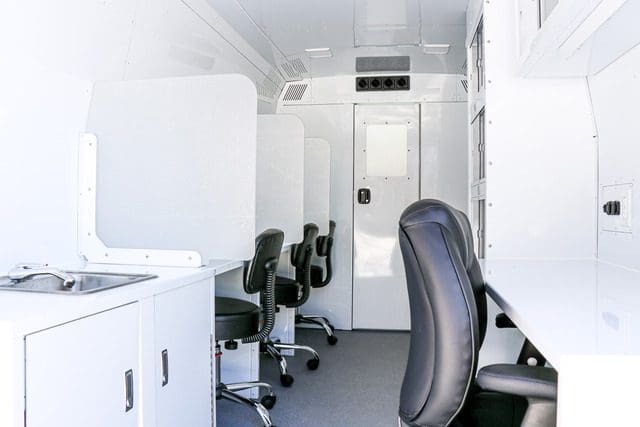
A mobile overdose prevention unit is a van built to save lives in the moment. It’s a safe, clean place where people can use substances under the care of trained staff. That way, if something goes wrong, someone is right there to help. No delays, no judgment, and no more people dying alone in alleyways or public bathrooms.
These vans are designed to lower overdose deaths, reduce drug use in public places, and build trust with folks who feel like no one’s ever been on their side.
What’s inside the van?
- Private stations: So each person has space to use safely
- Clean, medical setup: Easy to sanitize and stocked with supplies
- Comfortable climate: Heat and A/C to stay open year-round
- Staff space: Room for planning care or offering referrals
You can use your opioid settlement fund to buy the van, customize it, and pay staff to run it. Some programs also cover fuel, supplies, and training.
I’ve seen these units change lives. They keep people alive long enough to want help, and when that moment comes, your team is already there. This isn’t about enabling. It’s about keeping people safe until they’re ready for something more.
5. The Mobile Response Unit

A mobile response unit is designed to help people fast, but it’s not an ambulance. It’s for non-emergency care, especially when someone is in crisis but doesn’t need to go to the ER. For folks dealing with opioid use disorder (OUD), this kind of van can make all the difference.
Let’s say someone is showing early signs of overdose, or they’re withdrawing, or just not sure where to turn. Your team can pull up in a mobile response van, check on them, offer support, and connect them to the right services without sirens or stretchers. It’s care that meets people with calm, not chaos.
Here’s what a mobile response van can do:
- De-escalate situations: Offer support during a mental health or substance use crisis
- Provide on-the-spot care: Check vitals, treat minor issues, offer harm reduction supplies
- Connect to services: Help people take the next step, like MAT, housing, or peer support
- Show up quietly: Reduce the fear and stigma that comes with flashing lights and uniforms
The mobile response unit is a calm, trusted presence during overwhelming moments. You don’t rush in with pressure; you show up with compassion, often opening the door to real change.
How do you apply for opioid settlement funds?
So you’ve got ideas. Maybe you’ve already picked out the kind of mobile unit that fits your community’s needs. But now you’re asking, how do you apply for opioid settlement funds? And more importantly, where do you even start?
The process isn’t the same everywhere. Each state has its own rules, timelines, and points of contact. Some make it super clear with public dashboards and grant portals. Others, not so much. That’s why understanding opioid settlement funds by state is key.
In most cases, you’ll need to:
- Find your state’s settlement fund website or oversight board
- Review how your state is prioritizing spending
- Look for available grants or proposals
- Apply through local health departments or state agencies
- Show how your project addresses prevention, treatment, recovery, or harm reduction
Opioid settlement funds by state
To help you out, I’ve gathered some info on a few specific states below. This isn’t a complete list, but it gives you a starting point.
Heads up: These resources may change, so check back often or contact your state’s opioid settlement office directly.
| State / Region | Where & how to apply |
| Illinois opioid settlement funds | Illinois Opioid Settlements Initiative site – click “Funding Opportunities” to access the application platform and guidance |
| Oklahoma opioid settlement funds | Oklahoma Opioid Abatement Board portal – opens ~May 12 to June 11 for counties, municipalities, and schools |
| Indiana opioid settlement funds | Indiana ABAG information – outlines funding over 18 years |
| Louisiana opioid settlement funds | Louisiana Opioid Abatement Task Force – download agendas, exhibits, and the distribution process |
| Michigan opioid settlement funds | Michigan DHHS opioid settlement – details $800M+ funding and local distribution |
| Missouri opioid settlement funds | Missouri Opioid Settlement – includes reporting requirements and resource guides |
| New York opioid settlement fund | NY OASAS – Request for Applications, regional abatements, submission instructions |
| Ohio opioid settlement funds | OneOhio Recovery Foundation Grant portal – regional grants; sign up for next cycle updates |
| California opioid settlement funds | California DHCS page – settlement info and distribution outlines (Note: application processes may be managed locally) |
| Massachusetts opioid settlement funds | Massachusetts AG opioid settlement info – details allocations (typically via state agency) |
| Philadelphia opioid settlement funds | City of Philadelphia’s Opioid Response page – local program updates and funding notices |
| Kentucky opioid settlement funds | (Similar to others; check Kentucky AG or health dept portals) |
| Georgia opioid settlement funds | (Georgia AG “Opioid Crisis Abatement Trust” site outlines options) |
| Arizona opioid settlement funds | (Arizona AG opioids page provides an overview) |
| Florida opioid settlement funds | (Florida AG “Opioid Settlement Agreement” info available) |
How do you build a winning plan for your opioid settlement fund proposal?
You’ve got a good idea. Maybe even the perfect vehicle picked out. But now comes the part that can feel a bit overwhelming, putting it all into a plan. Writing a strong proposal for opioid settlement funds doesn’t have to be complicated. It just needs to be clear, community-focused, and tied to the bigger goals of the fund.
Here’s how I help organizations like yours build a solid case for funding mobile medical units.
Start with the problem:
What gap are you trying to fill? Maybe your rural community has no local clinic. Maybe people can’t get to treatment. Or maybe stigma keeps them away. Keep it real and focused on your people.
Back it up:
Use local stats or stories. Show how overdose rates, waitlists, or lack of access are hurting your community. You don’t need a research paper. Just data that paints a picture.
Connect the dots:
Explain how your mobile unit solves the problem. Be specific.
- What services will it offer?
- Who will it serve?
- Where will it go?
- How many people could it reach?
Show long-term impact:
The fund wants real, lasting change. Explain how your plan will improve lives over time, not just in year one.
Bonus tip:
If your state allows collaboration, team up with a local health group or nonprofit. That can strengthen your case.
Ready to turn opioid settlement funds into real community impact?
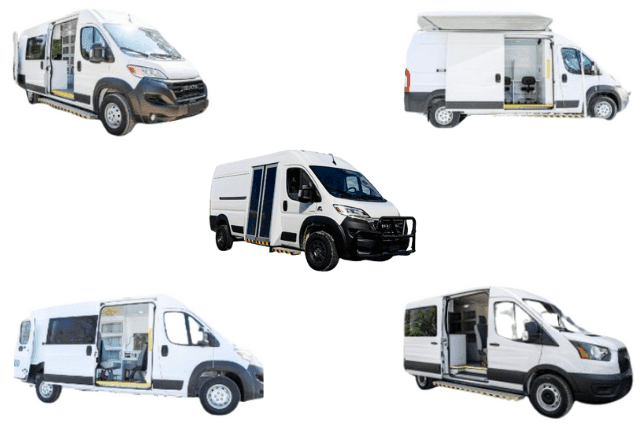
You’re here because you’re facing a big challenge. You’ve got opioid settlement funds—or you’re close to getting them—and you need to figure out how to make them matter. Maybe you’re feeling the pressure to make the right call. Perhaps you’re tired of seeing your community fall through the cracks. I’ve been there. And I want to help.
Here’s what we walked through together:
- What opioid settlement funds are and why they exist
- What they can be used for
- How mobile medical units can bridge the gap for real people
- Where and how to apply for funds in your state
At AVAN Mobility, I’ve worked with organizations just like yours, from small towns to big cities, to bring care to the people who need it most. Our team is passionate about building solutions that roll into neighborhoods and make a real difference. I’ve seen lives changed, hope rebuilt, and communities strengthened. This work matters. And if you’re thinking about taking that next step, I’d be honored to walk through it with you.
Have questions? Curious what a mobile solution could look like for you? Click the button below. Let’s talk it out, human to human. No pressure, no pitch, just real answers.
And if you’re not ready to talk yet, that’s okay too. Here are a few helpful articles that can take you a step closer:
- Top 5 tips on how to start a mobile medical clinic: This article provides some helpful tips on starting a mobile clinic.
- Buying a mobile medical van – your process with AVAN Mobility: You’ll learn what’s involved in the process from start to finish.
- Mobile medical van customization: This will guide you on what customization options are possible with a mobile medical van.
You’re not alone in this. Let’s make something meaningful happen together.
